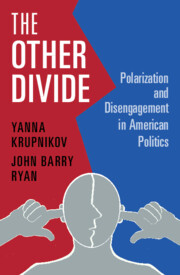Book contents
- The Other Divide
- The Other Divide
- Copyright page
- Dedication
- Contents
- Figures
- Tables
- Preface and Acknowledgments
- 1 A House Divided against Itself?
- 2 Subtleties of Partisan Division
- 3 Beyond Political Interest
- 4 The Deeply Involved Are Different
- 5 Bubbles of Involvement
- 6 Perceptions of the Most Sacred Duty
- 7 A New Form of Self-Expression
- 8 The Voice of Which People?
- 9 Middle Grove
- Appendix
- References
- Index
- References
References
Published online by Cambridge University Press: 19 January 2022
- The Other Divide
- The Other Divide
- Copyright page
- Dedication
- Contents
- Figures
- Tables
- Preface and Acknowledgments
- 1 A House Divided against Itself?
- 2 Subtleties of Partisan Division
- 3 Beyond Political Interest
- 4 The Deeply Involved Are Different
- 5 Bubbles of Involvement
- 6 Perceptions of the Most Sacred Duty
- 7 A New Form of Self-Expression
- 8 The Voice of Which People?
- 9 Middle Grove
- Appendix
- References
- Index
- References
Summary

- Type
- Chapter
- Information
- The Other Divide , pp. 263 - 287Publisher: Cambridge University PressPrint publication year: 2022

